Tribe Marmotini Higher classification Marmot | Phylum Chordata Family Sciuridae Genus Marmota Rank Species | |
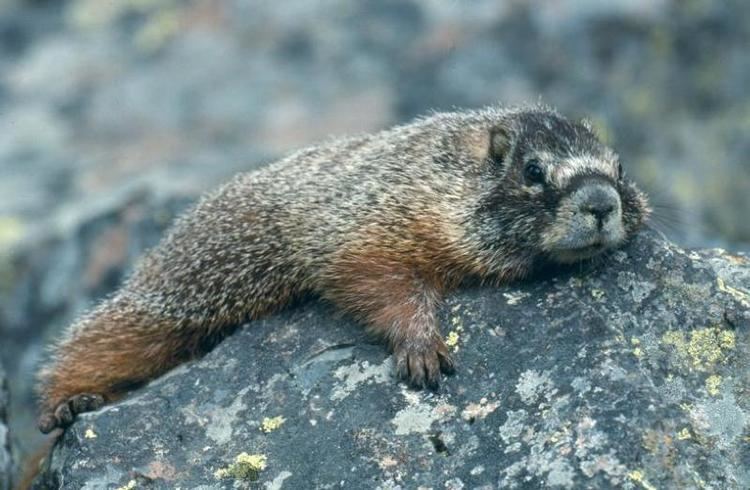 | ||
Did you know Yellow-Bellied Marmots prefer open habitats such as alpine meadows, steppes, pastures and the edges of forests. Similar Marmot, Squirrel, Hoary marmot, Mammal, Rodent | ||
Yellow bellied marmot
The yellow-bellied marmot (Marmota flaviventris), also known as the rock chuck, is a ground squirrel in the marmot genus. It is native to mountainous regions of the western United States and southwestern Canada, including the Rocky Mountains, Sierra Nevada and Mount Rainier in Washington State, typically living above 6,500 feet (2,000 m). The fur is mainly brown, with a dark bushy tail, yellow chest and white patch between the eyes and they weigh up to about 5 kg (11 lb). They live in burrows in colonies of up to twenty individuals with a single dominant male. They are diurnal and feed on plant material, insects and bird eggs. They hibernate for about eight months from September till the weather warms up.
Contents
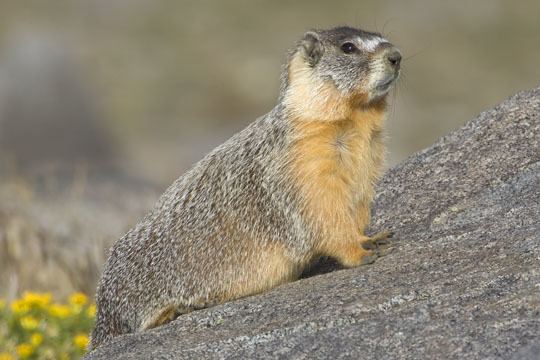
Description
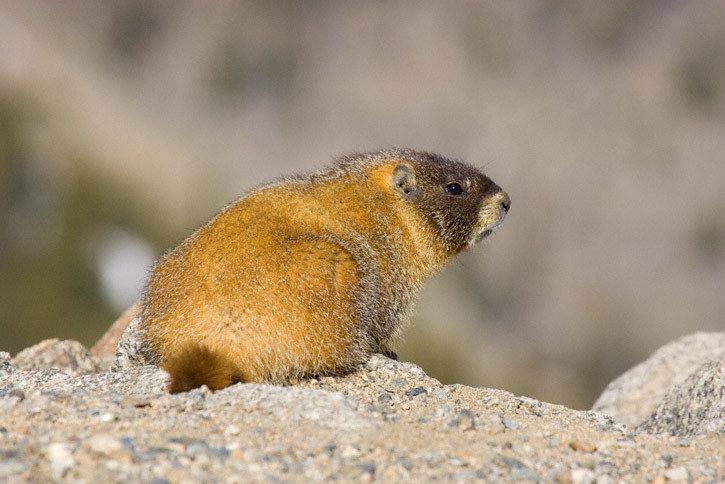
Yellow-bellied marmots usually weigh from 1.6 to 5.2 kilograms (3.5 to 11.5 lb) when fully grown, though males typically weigh more than females. Adult males typically weigh between 3 to 5 kilograms (6.6 to 11.0 lb); females typically weigh between 1.6 to 4 kilograms (3.5 to 8.8 lb). They have a brown coat, a white patch of fur between the eyes, a reddish-brown tail, and a yellow belly, from which they get their name. Their ears are small and round, and they have a short white muzzle with a black nose. They get fatter in the autumn just before hibernating.
Habitat and distribution
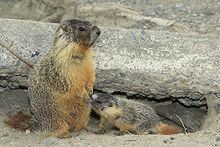
The yellow-bellied marmot lives in the western United States and southwestern Canada, including the Rocky Mountains and the Sierra Nevada. It inhabits steppes, meadows, talus fields and other open habitats, sometimes on the edge of deciduous or coniferous forests, and typically above 6,500 feet (2,000 m) of elevation.
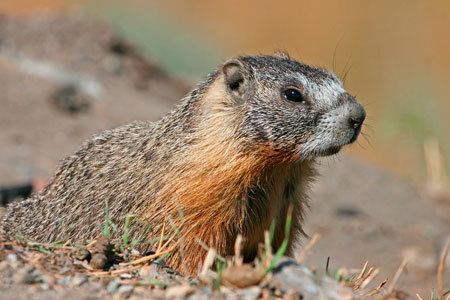
Their territory is about 4 to 7 acres (2 to 3 ha) around a number of summer burrows. Marmots choose to dig burrows under rocks because predators are less likely to see their burrow. Predators include wolves, foxes, coyotes, dogs and eagles. When a marmot sees a predator, it whistles to warn all other marmots in the area (giving it the nickname "whistle pig"). Then it typically hides in a nearby rock pile.
Behavior
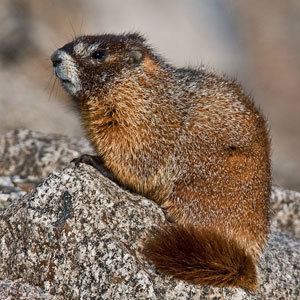
Marmots reproduce when about two years old, and may live up to an age of fifteen years. They reside in colonies of about ten to twenty individuals. Each male marmot digs a burrow soon after he wakes up from hibernation. He then starts looking for females, and by summer may have up to four female mates living with him. Litters usually average three to five offspring per female. Only about half of those pups survive and become yearlings. Marmots have a "harem-polygynous" mating system in which the male reproduces with two or three mates at the same time. Female offspring tend to stay in the area around their home. Male offspring typically leave when they are yearlings and will defend one or more females.
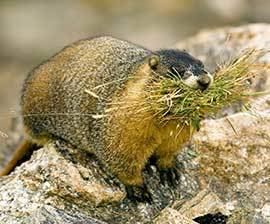
Yellow-bellied marmots spend about 80% of their life in their burrow, 60% of which is spent hibernating. They often spend mid-day and night in a burrow as well. These burrows are usually constructed on a slope, such as a hill, mountain, or cliff. The hibernation burrows can be up to 5 to 7 metres (16 to 23 ft) deep, but the burrows constructed for daily use are usually only 1 metre (3.3 ft) deep. Their hibernation period varies on elevation, but it is typically from September to May. Occasionally, they will climb trees and other flora, but they are usually terrestrial.
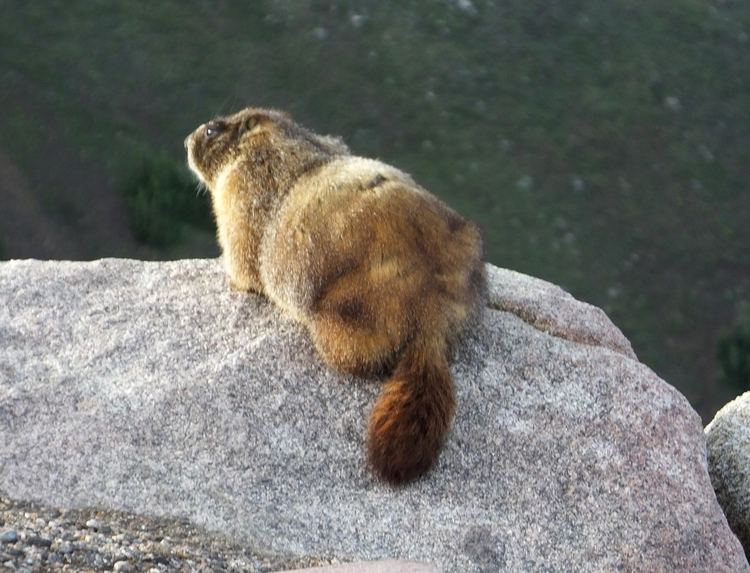
Yellow-bellied marmots are diurnal. The marmot is also an omnivore, eating grass, grains, leaves, flowers, legumes, fruit, grasshoppers, and bird eggs.

